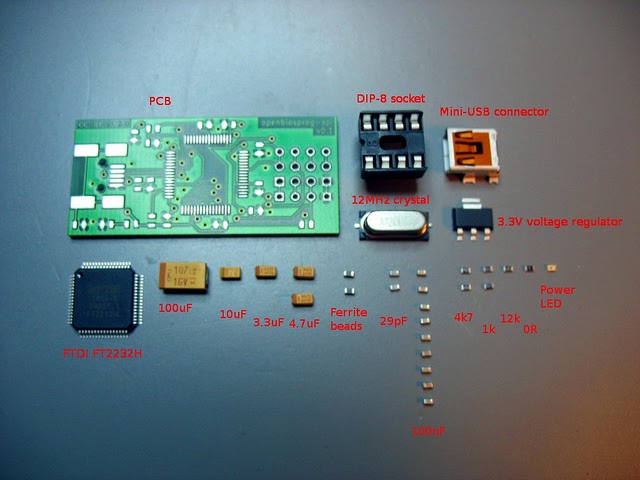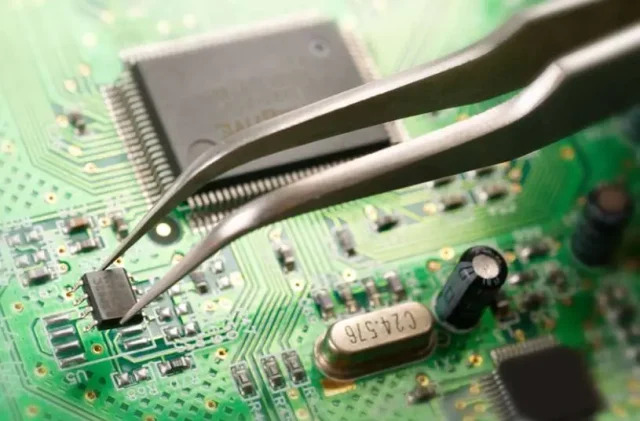Advanced Driver Assistance Systems (ADAS) are transforming the automotive industry by enhancing vehicle safety and paving the way for autonomous driving. At the heart of these systems lie printed circuit boards (PCBs) that must meet stringent reliability standards under harsh conditions. If you're an engineer or designer looking for ADAS PCB component placement guidelines, strategies for minimizing EMI in ADAS PCBs, or tips for vibration resistant PCB design, you're in the right place. This blog post dives deep into best practices for component placement to ensure high reliability in ADAS applications, covering automotive PCB assembly essentials and component derating for ADAS.
In the following sections, we'll explore actionable techniques to optimize your PCB layout for performance, durability, and compliance with automotive standards. Let's get started with a comprehensive guide tailored for engineers working on cutting-edge automotive electronics.
Why Component Placement Matters in ADAS PCBs
In ADAS applications, PCBs are exposed to extreme conditions like temperature swings, vibrations, and electromagnetic interference (EMI). Poor component placement can lead to signal integrity issues, overheating, or mechanical failure, all of which can compromise the safety-critical functions of ADAS systems such as lane departure warnings, adaptive cruise control, and collision avoidance.
Proper component placement ensures efficient signal paths, reduces noise, and enhances thermal management. It also plays a vital role in making the PCB resistant to vibrations and compliant with automotive reliability standards. By following the best practices outlined below, you can design ADAS PCBs that perform reliably even in the harshest environments.

Key Guidelines for ADAS PCB Component Placement
Component placement is the foundation of a high-reliability PCB design. Below are detailed guidelines to help you achieve optimal results for ADAS systems.
1. Prioritize Critical Components Near ICs
Place critical components like decoupling capacitors as close as possible to the power pins of integrated circuits (ICs). This minimizes high-frequency noise and prevents EMI propagation, a key concern for minimizing EMI in ADAS PCBs. For instance, a decoupling capacitor with a value of 0.1 μF should ideally be placed within 2-3 mm of the IC's power pin to ensure effective noise suppression.
Additionally, ensure that high-speed signal components, such as oscillators or clock generators, are positioned near the ICs they serve. This reduces trace lengths and lowers the risk of signal degradation, which is critical for ADAS systems that rely on precise timing for sensor data processing.
2. Group Components by Function
Group components based on their functionality to streamline signal flow and reduce interference. For example, keep analog components separate from digital ones to avoid noise coupling. Place power supply components, like voltage regulators, near the board's edge or in a dedicated area to isolate heat and EMI from sensitive signal areas.
This functional grouping also simplifies troubleshooting and testing during automotive PCB assembly, ensuring that each section of the PCB can be validated independently for performance and reliability.
3. Optimize for Thermal Management
ADAS PCBs often operate in high-temperature environments, so thermal management is crucial. Place heat-generating components, such as power transistors or high-current ICs, away from temperature-sensitive components like sensors. Use thermal vias and heat sinks where necessary to dissipate heat effectively.
For example, if a power IC generates significant heat (e.g., 2-3 W), ensure it is placed near the board's edge with adequate copper planes for heat dissipation. This prevents thermal stress on nearby components and extends the PCB's lifespan under automotive conditions.

Strategies for Minimizing EMI in ADAS PCBs
Electromagnetic interference (EMI) can disrupt the performance of ADAS systems, leading to inaccurate sensor readings or communication failures. Here’s how to minimize EMI through strategic component placement and layout design.
1. Maintain Proper Grounding
A solid ground plane is essential for EMI control. Place components in a way that allows short, direct connections to the ground plane. Avoid placing high-speed components over split ground planes, as this can create EMI hotspots. For instance, ensure that traces carrying signals at frequencies above 100 MHz are routed over a continuous ground plane to minimize loop inductance.
2. Separate High-Speed and Low-Speed Signals
Position components handling high-speed signals (e.g., data lines for cameras or radar) away from low-speed or analog components. This prevents crosstalk and reduces EMI. If possible, use shielding or guard traces between high-speed and sensitive signal paths to further isolate noise.
3. Route Power Traces Carefully
Place power components and traces away from sensitive signal areas. Wide power traces or planes can help reduce impedance and noise. For example, a power trace carrying 5 A should be at least 20 mils wide to handle the current without significant voltage drops or EMI generation.
Designing for Vibration Resistance in ADAS PCBs
Automotive environments subject PCBs to constant vibrations, which can cause mechanical failure or component detachment. A vibration resistant PCB design is non-negotiable for ADAS reliability. Here are key placement tips to enhance durability.
1. Secure Heavy Components
Place heavier components, such as large capacitors or connectors, near mounting holes or areas with mechanical support. This reduces stress on solder joints during vibration. For instance, a 10 g component should be placed within 5 mm of a mounting point to minimize movement.
2. Use Symmetrical Layouts
A symmetrical component layout helps balance mechanical stress across the PCB. Avoid clustering heavy components on one side, as this can lead to uneven stress distribution during vibrations. Distribute components evenly to ensure the board withstands frequencies up to 200 Hz, a common range for automotive vibration testing.
3. Reinforce with Adhesives or Underfill
For critical components like ball grid arrays (BGAs), consider using adhesives or underfill materials to secure them to the PCB. Place these components in areas with easy access for applying such materials during assembly, ensuring they remain stable under vibration.
Component Derating for ADAS Reliability
Component derating for ADAS is a critical practice to ensure long-term reliability by operating components below their maximum ratings. This reduces stress and extends lifespan, especially in the demanding automotive environment.
1. Derate Voltage and Current Ratings
Operate components at 50-70% of their maximum voltage and current ratings. For example, if a capacitor is rated for 25 V, use it in a circuit with a maximum of 12-17 V. This prevents breakdown under voltage spikes, which are common in automotive systems.
2. Consider Temperature Derating
Account for temperature derating by selecting components with ratings well above the expected operating range. Automotive PCBs may experience temperatures from -40°C to 85°C or higher. Choose components rated for at least 105°C to ensure reliability at the upper limit.
3. Apply Power Derating for Active Components
For active components like transistors or ICs, derate power dissipation by at least 50%. If an IC is rated for 1 W, limit its operation to 0.5 W or less through proper heat sinking and placement away from other heat sources.
Best Practices for Automotive PCB Assembly
Effective automotive PCB assembly starts with component placement but extends to the manufacturing process. Here are tips to ensure a smooth assembly process for ADAS PCBs.
1. Align Components for Automated Assembly
Place components with consistent orientation (e.g., all capacitors facing the same direction) to simplify automated pick-and-place processes. This reduces assembly errors and speeds up production, especially for high-volume ADAS PCB runs.
2. Ensure Clear Access for Soldering
Position components to avoid shadowing during wave soldering or reflow processes. For example, place taller components like electrolytic capacitors away from shorter ones to prevent uneven heating or poor solder joints.
3. Plan for Testing and Inspection
Leave adequate space around test points and critical components for in-circuit testing (ICT) and visual inspection. This ensures that assemblers can verify connections and functionality without obstruction, a key step in automotive quality control.

Testing and Validation for ADAS PCB Reliability
Once your PCB layout is complete, rigorous testing is essential to validate reliability. Incorporate component placement strategies that facilitate the following tests:
- Temperature Cycling: Expose the PCB to alternating high and low temperatures (e.g., -40°C to 85°C) to assess thermal stress resistance. Ensure heat-sensitive components are placed away from hotspots.
- Vibration Testing: Test the PCB at various frequencies (e.g., 10-200 Hz) to simulate automotive conditions. Verify that heavy components are securely placed near mounting points.
- Humidity Testing: Evaluate resistance to moisture by exposing the PCB to high humidity levels. Position connectors and sensitive components to minimize exposure risks.
By designing with testing in mind, you can catch potential issues early and ensure your ADAS PCB meets automotive standards.
Conclusion: Building Reliable ADAS PCBs with Strategic Component Placement
Designing high-reliability ADAS PCBs requires meticulous attention to component placement. By following the ADAS PCB component placement guidelines outlined in this post, you can optimize your layout for performance, durability, and compliance with automotive standards. From minimizing EMI in ADAS PCBs to creating a vibration resistant PCB design, each step contributes to a safer and more reliable system. Additionally, practices like component derating for ADAS and streamlined automotive PCB assembly ensure long-term success in harsh environments.
Whether you're working on radar systems, camera modules, or other ADAS features, these best practices provide a solid foundation for your design process. Start implementing these strategies in your next project to achieve exceptional results and contribute to the future of automotive safety.
 ALLPCB
ALLPCB







